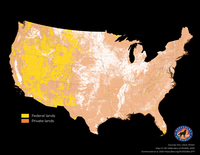Habitat Patrol
Laws and regulations that protect imperiled species and their habitats are often limited by inadequate monitoring and enforcement. We developed Habitat Patrol to help address this critical need. Habitat Patrol is a free, public web application that …California's Desert Tortoise
After existing for millions of years in the California desert, the desert tortoise is experiencing continued, rapid population declines throughout its range. Many of the threats to tortoise are human related, including military base expansion, road …Same law, diverging practice: Comparative analysis of Endangered Species Act consultations by two federal agencies
Evaluating how wildlife conservation laws are implemented is critical for safeguarding biodiversity. Two agencies, the U.S. Fish and Wildlife Service and National Marine Fisheries Service (FWS and NMFS; Services collectively), are responsible for …Update to the U.S. Fish and Wildlife Service endangered species program FY 2021 request
This document serves as an update of CCI’s funding analysis in 2019 , where we found that the FWS receives less than half of what is needed to run the ESA as Congress intended. Last year, thanks in part to this work, Congress provided a 5.6% …Recovery units under the Endangered Species Act could be used more widely
Recovering species is one of the main goals of the Endangered Species Act (ESA). In the face of limited budgets, diverse tools are needed to find efficient solutions. Recovery units may be one such tool -designated portions of a species range that …